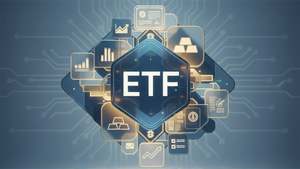
SEMICON India 2025, held from September 2-4, 2025, in New Delhi, concluded as a watershed moment, decisively signaling India's accelerated ascent in the global semiconductor landscape. The event, themed "Building the Next Semiconductor Powerhouse," showcased unprecedented progress in indigenous manufacturing capabilities, attracted substantial new investments, and solidified strategic partnerships vital for forging a robust and self-reliant semiconductor ecosystem. With over 300 exhibiting companies from 18 countries, the conference underscored a surging international confidence in India's ambitious chip manufacturing future.
The immediate significance of SEMICON India 2025 is profound, positioning India as a critical player in diversifying global supply chains and fostering technological self-reliance. The conference reinforced projections of India's semiconductor market soaring from approximately US$38 billion in 2023 to US$45–50 billion by the end of 2025, with an aggressive target of US$100–110 billion by 2030. This rapid growth, coupled with the imminent launch of India's first domestically produced semiconductor chip by late 2025, marks a decisive leap forward, promising massive job creation and innovation across the nation.
India's Chip Manufacturing Takes Form: From Fab to Advanced Packaging
SEMICON India 2025 provided a tangible glimpse into the technical backbone of India's burgeoning semiconductor industry. A cornerstone announcement was the expected market availability of India's first domestically produced semiconductor chip by the end of 2025, leveraging mature yet critical 28 to 90 nanometre technology. While not at the bleeding edge of sub-5nm fabrication, this initial stride is crucial for foundational applications and represents a significant national capability, differing from previous approaches that relied almost entirely on imported chips. This milestone establishes a domestic supply chain for essential components, reducing geopolitical vulnerabilities and fostering local expertise.
The event highlighted rapid advancements in several large-scale projects initiated under the India Semiconductor Mission (ISM). The joint venture between Tata Group (NSE: TATACHEM) and Taiwan's Powerchip Semiconductor Manufacturing Corporation (PSMC) for a state-of-the-art semiconductor fabrication plant in Dholera, Gujarat, is progressing swiftly. This facility, with a substantial investment of ₹91,000 crore (approximately US$10.96 billion), is projected to achieve a production capacity of 50,000 wafers per month. Such a facility is critical for mass production, laying the groundwork for a scalable semiconductor ecosystem.
Beyond front-end fabrication, India is making significant headway in back-end operations with multiple Assembly, Testing, Marking, and Packaging (ATMP) and Outsourced Semiconductor Assembly and Test (OSAT) facilities. Micron Technology's (NASDAQ: MU) advanced ATMP facility in Sanand, Gujarat, is on track to process up to 1.35 billion memory chips annually, backed by a ₹22,516 crore investment. Similarly, the CG Power (NSE: CGPOWER), Renesas (TYO: 6723), and Stars Microelectronics partnership for an OSAT facility, also in Sanand, recently celebrated the rollout of its first "made-in-India" semiconductor chips from its assembly pilot line. This ₹7,600 crore investment aims for a robust daily production capacity of 15 million units. These facilities are crucial for value addition, ensuring that chips fabricated domestically or imported as wafers can be finished and prepared for market within India, a capability that was largely absent before.
Initial reactions from the global AI research community and industry experts have been largely positive, recognizing India's strategic foresight. While the immediate impact on cutting-edge AI chip development might be indirect, the establishment of a robust foundational semiconductor industry is seen as a prerequisite for future advancements in specialized AI hardware. Experts note that by securing a domestic supply of essential chips, India is building a resilient base that can eventually support more complex AI-specific silicon design and manufacturing, differing significantly from previous models where India was primarily a consumer and design hub, rather than a manufacturer of physical chips.
Corporate Beneficiaries and Competitive Shifts in India's Semiconductor Boom
The outcomes of SEMICON India 2025 signal a transformative period for both established tech giants and emerging startups, fundamentally reshaping the competitive landscape of the semiconductor industry. Companies like the Tata Group (NSE: TATACHEM) are poised to become central figures, with their joint venture with Powerchip Semiconductor Manufacturing Corporation (PSMC) in Gujarat marking a colossal entry into advanced semiconductor fabrication. This strategic move not only diversifies Tata's extensive portfolio but also positions it as a national champion in critical technology infrastructure, benefiting from substantial government incentives under the India Semiconductor Mission (ISM).
Global players are also making significant inroads and stand to benefit immensely. Micron Technology (NASDAQ: MU) with its advanced ATMP facility, and the consortium of CG Power (NSE: CGPOWER), Renesas (TYO: 6723), and Stars Microelectronics with their OSAT plant, are leveraging India's attractive policy environment and burgeoning talent pool. These investments provide them with a crucial manufacturing base in a rapidly growing market, diversifying their global supply chains and potentially reducing production costs. The "made-in-India" chips from CG Power's facility represent a direct competitive advantage in the domestic market, particularly as the Indian government plans mandates for local chip usage.
The competitive implications are significant. For major AI labs and tech companies globally, India's emergence as a manufacturing hub offers a new avenue for resilient supply chains, reducing dependence on a few concentrated regions. Domestically, this fosters a competitive environment that will spur innovation among Indian startups in chip design, packaging, and testing. Companies like Tata Semiconductor Assembly and Test (TSAT) in Assam and Kaynes Semicon (NSE: KAYNES) in Gujarat, with their substantial investments in OSAT facilities, are set to capture a significant share of the rapidly expanding domestic and regional market for packaged chips.
This development poses a potential disruption to existing products or services that rely solely on imported semiconductors. As domestic manufacturing scales, companies integrating these chips into their products may see benefits in terms of cost, lead times, and customization. Furthermore, the HCL (NSE: HCLTECH) – Foxconn (TWSE: 2354) joint venture for a display driver chip unit highlights a strategic move into specialized chip manufacturing, catering to the massive consumer electronics market within India and potentially impacting the global display supply chain. India's strategic advantages, including a vast domestic market, a large pool of engineering talent, and strong government backing, are solidifying its market positioning as an indispensable node in the global semiconductor ecosystem.
India's Semiconductor Push: Reshaping Global Supply Chains and Technological Sovereignty
SEMICON India 2025 marks a pivotal moment that extends far beyond national borders, fundamentally reshaping the broader AI and technology landscape. India's aggressive push into semiconductor manufacturing fits perfectly within a global trend of de-risking supply chains and fostering technological sovereignty, especially in the wake of recent geopolitical tensions and supply disruptions. By establishing comprehensive fabrication, assembly, and testing capabilities, India is not just building an industry; it is constructing a critical pillar of national security and economic resilience. This move is a strategic response to the concentrated nature of global chip production, offering a much-needed diversification point for the world.
The impacts are multi-faceted. Economically, the projected growth of India's semiconductor market to US$100–110 billion by 2030, coupled with the creation of an estimated 1 million jobs by 2026, will be a significant engine for national development. Technologically, the focus on indigenous manufacturing, design-led innovation through ISM 2.0, and mandates for local chip usage will stimulate a virtuous cycle of R&D and product development within India. This will empower Indian companies to create more sophisticated electronic goods and AI-powered devices, tailored to local needs and global demands, reducing reliance on foreign intellectual property and components.
Potential concerns, however, include the immense capital intensity of semiconductor manufacturing and the need for sustained policy support and a continuous pipeline of highly skilled talent. While India is rapidly expanding its talent pool, maintaining a competitive edge against established players like Taiwan, South Korea, and the US will require consistent investment in advanced research and development. The environmental impact of large-scale manufacturing also needs careful consideration, with discussions at SEMICON India 2025 touching upon sustainable industry practices, indicating a proactive approach to these challenges.
Comparisons to previous AI milestones and breakthroughs highlight the foundational nature of this development. While AI breakthroughs often capture headlines with new algorithms or models, the underlying hardware, the semiconductors, are the unsung heroes. India's commitment to becoming a semiconductor powerhouse is akin to a nation building its own advanced computing infrastructure from the ground up. This strategic move is as significant as the early investments in computing infrastructure that enabled the rise of Silicon Valley, providing the essential physical layer upon which future AI innovations will be built. It represents a long-term play, ensuring that India is not just a consumer but a producer and innovator at the very core of the digital revolution.
The Road Ahead: India's Semiconductor Future and Global Implications
The momentum generated by SEMICON India 2025 sets the stage for a dynamic future, with expected near-term and long-term developments poised to further solidify India's position in the global semiconductor arena. In the immediate future, the successful rollout of India's first domestically produced semiconductor chip by the end of 2025, utilizing 28 to 90 nanometre technology, will be a critical benchmark. This will be followed by the acceleration of construction and operationalization of the announced fabrication and ATMP/OSAT facilities, including those by Tata-PSMC and Micron, which are expected to scale production significantly in the next 1-3 years.
Looking further ahead, the evolution of the India Semiconductor Mission (ISM) 2.0, with its sharper focus on advanced packaging and design-led innovation, will drive the development of more sophisticated chips. Experts predict a gradual move towards smaller node technologies as experience and investment mature, potentially enabling India to produce chips for more advanced AI, automotive, and high-performance computing applications. The government's planned mandates for increased usage of locally produced chips in 25 categories of consumer electronics will create a robust captive market, encouraging further domestic investment and innovation in specialized chip designs.
Potential applications and use cases on the horizon are vast. Beyond consumer electronics, India's semiconductor capabilities will fuel advancements in smart infrastructure, defense technologies, 5G/6G communication, and a burgeoning AI ecosystem that requires custom silicon. The talent development initiatives, aiming to make India the world's second-largest semiconductor talent hub by 2030, will ensure a continuous pipeline of skilled engineers and researchers to drive these innovations.
However, significant challenges need to be addressed. Securing access to cutting-edge intellectual property, navigating complex global trade dynamics, and attracting sustained foreign direct investment will be crucial. The sheer technical complexity and capital intensity of advanced semiconductor manufacturing demand unwavering commitment. Experts predict that while India will continue to attract investments in mature node technologies and advanced packaging, the journey to become a leader in sub-7nm fabrication will be a long-term endeavor, requiring substantial R&D and strategic international collaborations. What happens next hinges on the continued execution of policy, the effective deployment of capital, and the ability to foster a vibrant, collaborative ecosystem that integrates academia, industry, and government.
A New Era for Indian Tech: SEMICON India 2025's Lasting Legacy
SEMICON India 2025 stands as a monumental milestone, encapsulating India's unwavering commitment and accelerating progress towards becoming a formidable force in the global semiconductor industry. The key takeaways from the event are clear: significant investment commitments have materialized into tangible projects, policy frameworks like ISM 2.0 are evolving to meet future demands, and a robust ecosystem for design, manufacturing, and packaging is rapidly taking shape. The imminent launch of India's first domestically produced chip, coupled with ambitious market growth projections and massive job creation, underscores a nation on the cusp of technological self-reliance.
This development's significance in AI history, and indeed in the broader technological narrative, cannot be overstated. By building foundational capabilities in semiconductor manufacturing, India is not merely participating in the digital age; it is actively shaping its very infrastructure. This strategic pivot ensures that India's burgeoning AI sector will have access to a secure, domestic supply of the critical hardware it needs to innovate and scale, moving beyond being solely a consumer of global technology to a key producer and innovator. It represents a long-term vision to underpin future AI advancements with homegrown silicon.
Final thoughts on the long-term impact point to a more diversified and resilient global semiconductor supply chain, with India emerging as an indispensable node. This will foster greater stability in the tech industry worldwide and provide India with significant geopolitical and economic leverage. The emphasis on sustainable practices and workforce development also suggests a responsible and forward-looking approach to industrialization.
In the coming weeks and months, the world will be watching for several key indicators: the official launch and performance of India's first domestically produced chip, further progress reports on the construction and operationalization of the large-scale fabrication and ATMP/OSAT facilities, and the specifics of how the ISM 2.0 policy translates into new investments and design innovations. India's journey from a semiconductor consumer to a global powerhouse is in full swing, promising a new era of technological empowerment for the nation and a significant rebalancing of the global tech landscape.
This content is intended for informational purposes only and represents analysis of current AI developments.
TokenRing AI delivers enterprise-grade solutions for multi-agent AI workflow orchestration, AI-powered development tools, and seamless remote collaboration platforms. For more information, visit https://www.tokenring.ai/.





